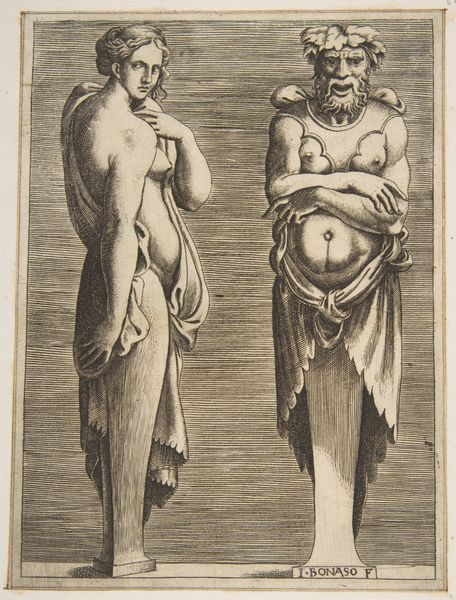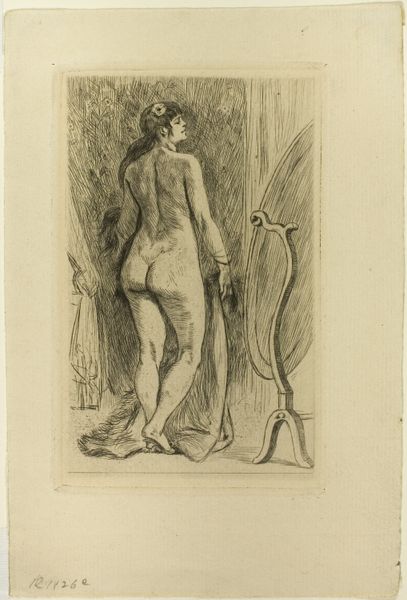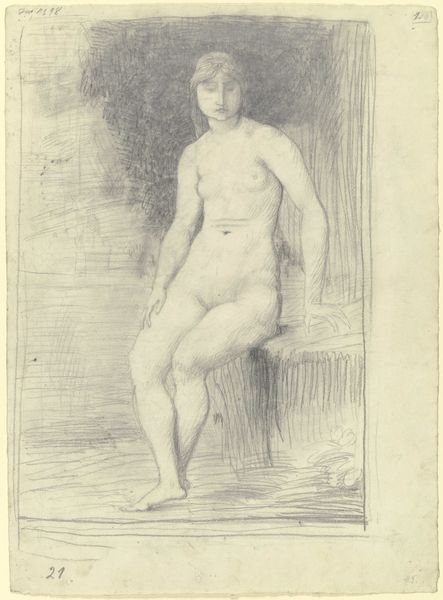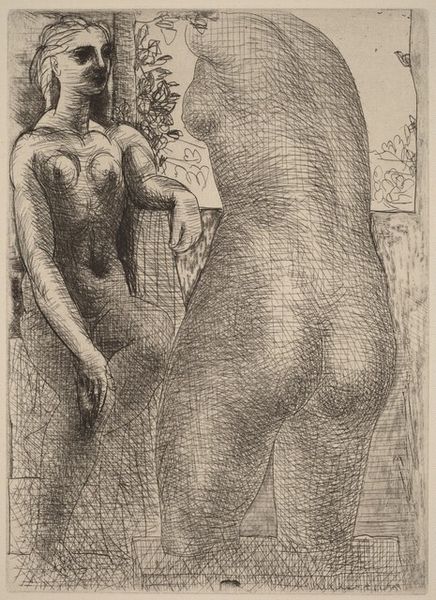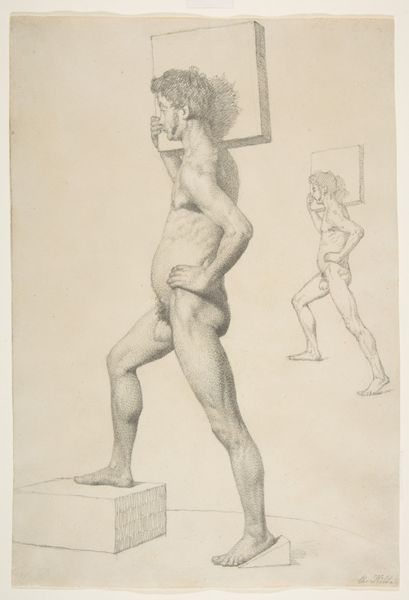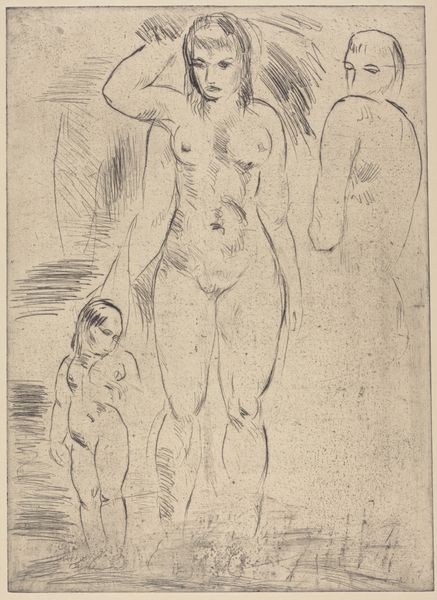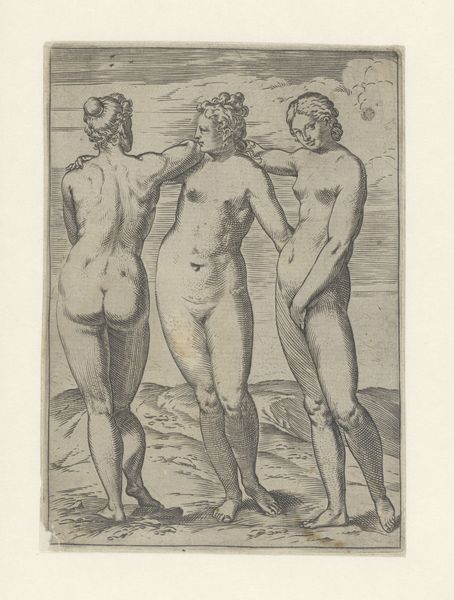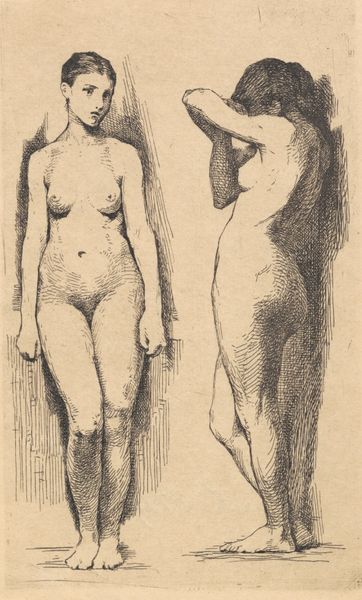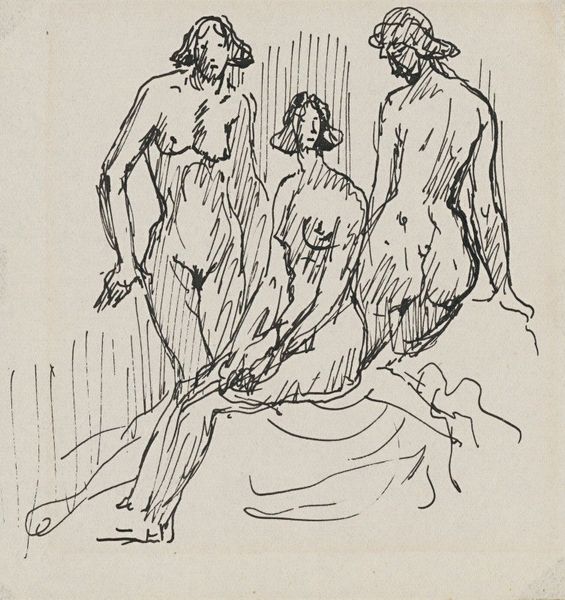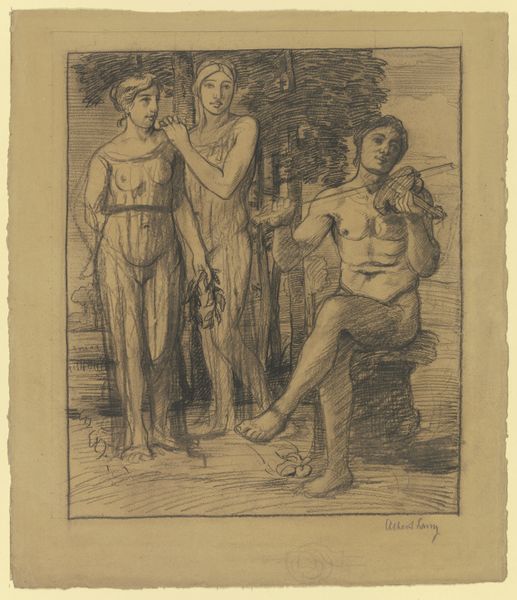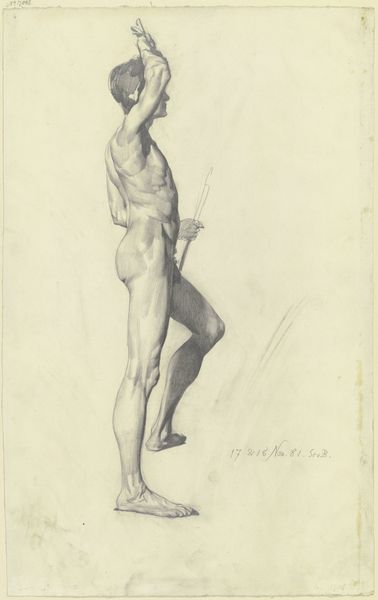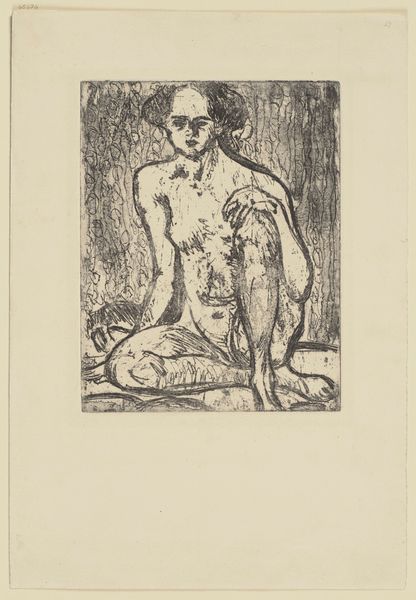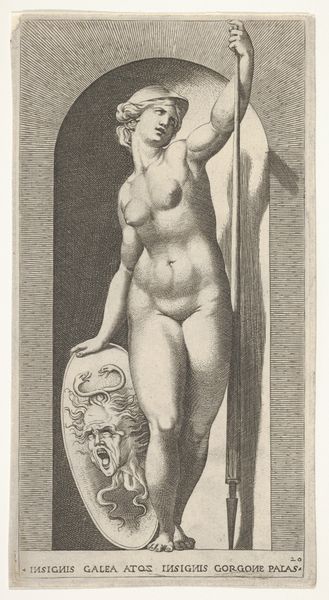
Copyright: Public Domain
Curator: This is Max Beckmann’s drawing "Modelle" from 1947, housed here at the Städel Museum. Editor: The somber ink work gives the composition an unsettling quality. The models' poses and the cubic elements surrounding them create an atmosphere of existential isolation, wouldn't you agree? Curator: It certainly captures a postwar mood. Beckmann, having endured Nazi persecution, fled to Amsterdam and eventually the US. His work, informed by those experiences, consistently grapples with alienation and societal breakdown, with its impact on the human condition. Editor: Yes, and I think this drawing really emphasizes that in its bare use of material. Look at the cross-hatching, the frantic, raw application of ink on paper. It conveys the sheer labor, the deliberate process of mark-making, to represent human figures as almost architectural, broken forms. The materials themselves feel expressive of fractured existence. Curator: I find the androgynous representation of the figures, their vulnerability so obviously laid bare, speaks to a collective trauma that defies traditional gender roles. It’s as if Beckmann wants us to question the foundations upon which identity and society are constructed in moments of intense precarity. Editor: And the unidealized representation of the body – the stark realism, is deliberate. By avoiding classical ideals, Beckmann rejects a nostalgic yearning for a past that no longer exists, or perhaps never did, highlighting a commitment to depicting the social realities around him. Curator: Precisely, and it becomes even more pointed when considering that these are models – beings whose bodies are often used as objects within the machinery of art. He pushes us to look for the person beneath the artist's object of study. Editor: Agreed. Seeing it through that lens deepens our understanding of the material world within the piece. It makes you think not only about the models and their experiences of the artmaking process, but the very real means by which the work came to exist. Curator: For me, Beckmann's work is so powerful because of its willingness to probe some very disquieting social conditions. The bodies become landscapes of the time, in the process really offering both a historical witness and an unsettling contemporary critique. Editor: The artist invites us to engage with materials, labor and context; revealing unsettling insights and hopefully encouraging us toward creating and promoting the value of collective experience.
Comments
No comments
Be the first to comment and join the conversation on the ultimate creative platform.
